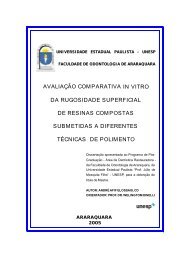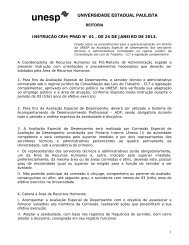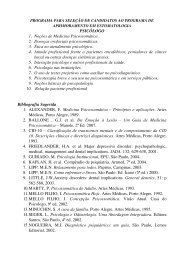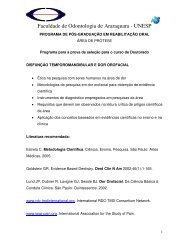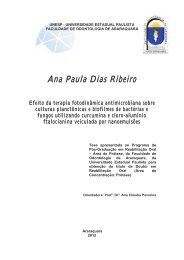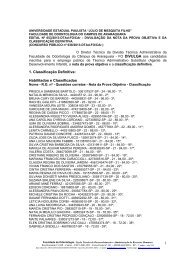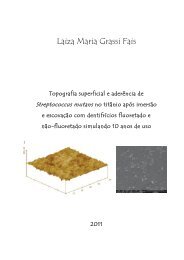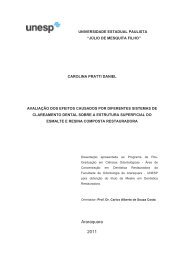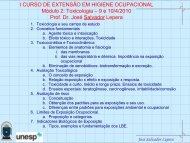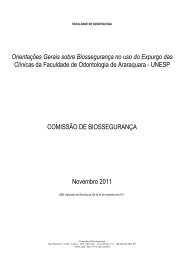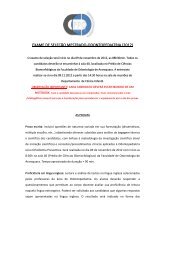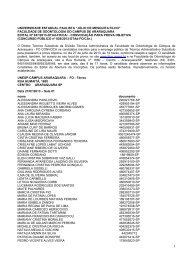universidade de são paulo - Faculdade de Odontologia - Unesp
universidade de são paulo - Faculdade de Odontologia - Unesp
universidade de são paulo - Faculdade de Odontologia - Unesp
Create successful ePaper yourself
Turn your PDF publications into a flip-book with our unique Google optimized e-Paper software.
44<br />
fluorine was incorporated. Robinson et al. 22 found that increasing the <strong>de</strong>gree of<br />
fluorination the surfaces became more negative due to the presence of the<br />
electronegative fluorine atoms. It has been reported that surface-charged resins<br />
may alter the ionic interaction between the <strong>de</strong>nture base and Candida spp 9-11 .<br />
Negatively charged resin surfaces showed significantly lower levels of Candida<br />
than the untreated ones 9,11 .<br />
Roughness has been consi<strong>de</strong>red an important factor that affects the<br />
adhesion and some studies have found that an increase in surface roughness<br />
facilitated the yeast retention 1,32-34 . Thus, in this study, in all groups half of the<br />
specimens were processed against stone and half were polymerized in contact<br />
with glass for obtaining rough and smooth surfaces, respectively. However, no<br />
significant differences were observed in the Candida albicans adhesion (Figure<br />
1). These results are in accordance with those reported in recent studies where no<br />
significant influence of roughness on adherence of Candida albicans was verified.<br />
5,26,35-37 . Nevertheless, other studies should be conducted using specimens with<br />
prepared surfaces that cover a wi<strong>de</strong> range of roughness values.<br />
Since all intra-oral surfaces are coated by saliva, it is important to consi<strong>de</strong>r<br />
its effects on adhesion. Hence, in the present investigation, half of the specimens<br />
of each group were preconditioned with saliva prior to inoculation. Adhesion of<br />
Candida albicans to untreated and treated specimens was not influenced by saliva.<br />
A comparison among in vitro studies reveals contradictory results. While some<br />
authors observed that salivary pellicle promoted fungal colonization on the<br />
materials 2,28,38-41 , others have found that the pretreatment with saliva had no



